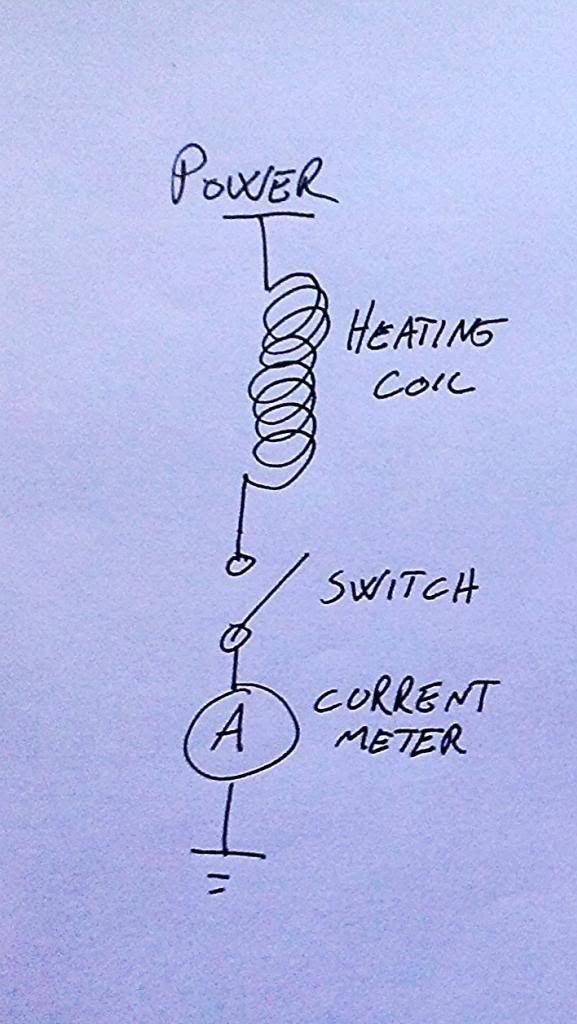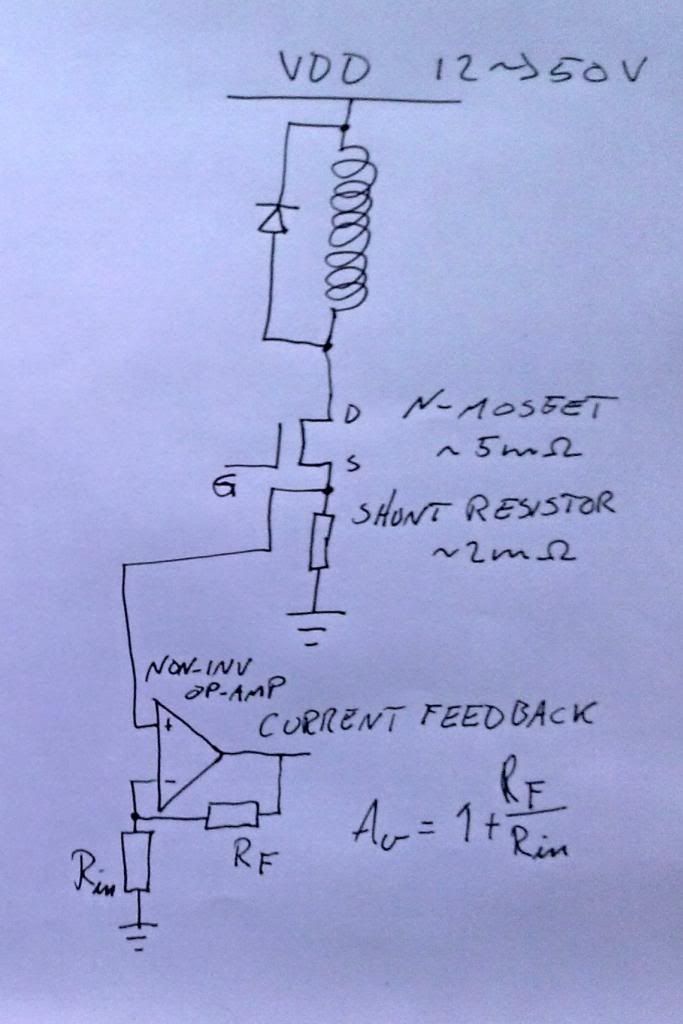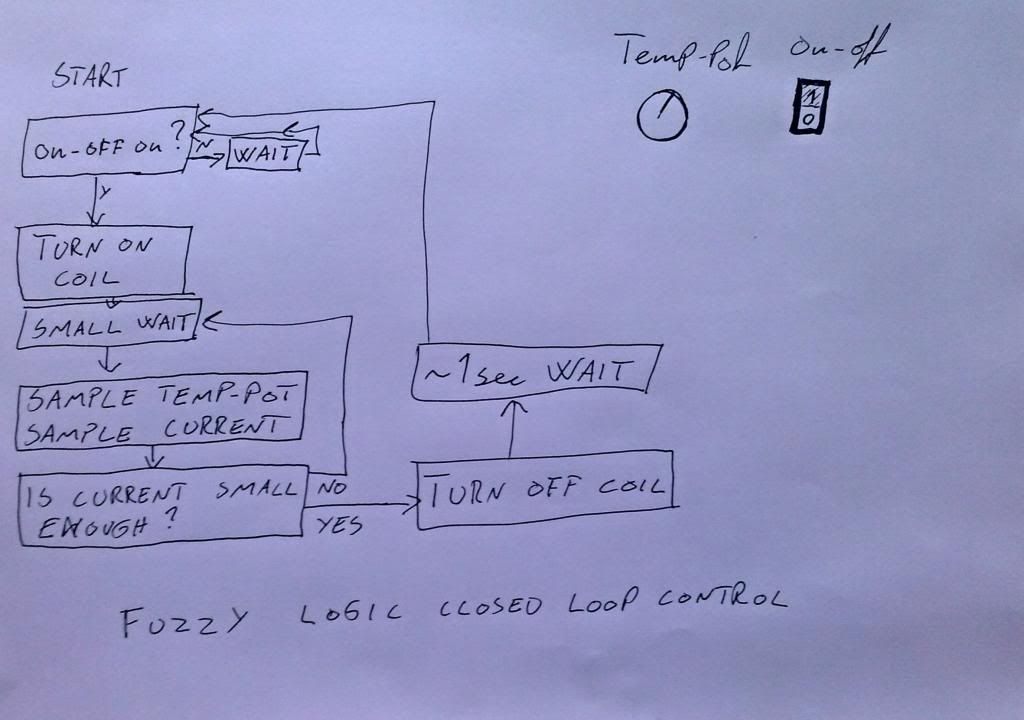In this project log entry I'll go through design, discussion and selection of the basic components of this furnace.

This basically shows the three main components to this furnace. The heating coil heats the furnace. The switch controls the coil. The current meter allows closed loop feedback to be implemented.

The heating coil is made up from stainless steel wire (about 2mm in diameter), bent into the correct shape. A fast diode protects the MOSFET during switch-off. N-MOSFETS, logic level (not the best solution, but the cheapest and easiest) function as the switch. A shunt resistor together with a non-inverting op amp enables current monitoring.
Why monitor the current? The resistance of the coil changes with temperature. So if one know the voltage to be constant and measure the current; the resistance (and the temperature) can be calculated.

Allaboutcircuits has more on resistance and temperature dependency here. I do not yet know the exact temperature coefficient of stainless steel, some sources will not list it - while others list a value I'm certain does not apply to the stuff I've got.
Check out wolfram-alpha graph tool for nicer graphs: Resistance as a function of temperature, Power as a function of temperature.
Why stainless steel over normal garden wire? While the cheap stuff would work for this heating application, it is normally galvanized. Galvanization adds a protective zinc layer to the coil. When the coil is heated, this will oxidize away and the fumes are toxic. Look up "metal fume fever" if you're in doubt as to if stainless is really worth it.
Higher temperature operation can be achieved with tungsten or tantalum wire. Tantalum seems to be cheaper, but both are hard to source cheaply in low quantity.

Fuzzy logic will be used to control the temperature. Mainly because fuzzy logic is easy to "get", while PID is complex. A pot will be used to adjust the temperature and a switch to turn it off and on. Additionally several status leds will visualize if the circuit is operational.
 Storken
Storken
Discussions
Become a Hackaday.io Member
Create an account to leave a comment. Already have an account? Log In.